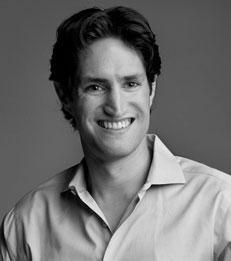Research Highlights
Prolonging the Pleasure and Abbreviating the Pain: How Consumers Categorize Experiences
—


...these categories are often subjective and malleable. So incidental features of the environment might affect how consumers navigate an experience and how satisfied they are with it.
Insight into how consumers think about undergoing experiences, whether positively or negatively, can help everyone from amusement park operators to retailers and dentists design their marketing and services. Now NYU Stern Associate Marketing Professor Adam Alter and Anuj Shah, a colleague in behavioral science from the University of Chicago’s Booth School of Business, have identified patterns in how people arrange the order of a series of upcoming positive and negative experiences.
Previous research has discussed how consumers might focus on savoring individual events or distribute appealing and unappealing events across time to maximize happiness. In “Consuming Experiential Categories,” Professors Alter and Shah, investigated how people scheduled those experiences.
The authors examined the different approaches that people adopt when scheduling positive versus negative events drawn from two categories (e.g., eating six delicious chocolates of two types vs. six unappetizing chocolates of two types). They found that when consumers are choosing among positive events, they are reluctant to eliminate experiential categories (e.g., they prefer to alternate between the delicious chocolate types until there’s only one more of each type), but for negative events consumers readily eliminate experiential categories (e.g., they finish all of the unappealing chocolates of one type before moving onto the other type). This seems to happen because eliminating categories creates the sense that they’re progressing through the experience more quickly.
Businesses can use this information in various ways, Professor Alter suggests. “Importantly,” he says, “these categories are often subjective and malleable. So incidental features of the environment might affect how consumers navigate an experience and how satisfied they are with it.” If amusement park operators intersperse games and rides throughout the park, a visitor’s experience may seem less fleeting. On the other hand, dentists who separate a procedure into two stages will give their patients a greater sense of progress if they mention the first stage is over before starting the second. And in-store promotions might feel more expansive if they are organized across different departments.
___
Adam Alter is an Associate Professor of Marketing with affiliated appointment in the Psychology Department.
Previous research has discussed how consumers might focus on savoring individual events or distribute appealing and unappealing events across time to maximize happiness. In “Consuming Experiential Categories,” Professors Alter and Shah, investigated how people scheduled those experiences.
The authors examined the different approaches that people adopt when scheduling positive versus negative events drawn from two categories (e.g., eating six delicious chocolates of two types vs. six unappetizing chocolates of two types). They found that when consumers are choosing among positive events, they are reluctant to eliminate experiential categories (e.g., they prefer to alternate between the delicious chocolate types until there’s only one more of each type), but for negative events consumers readily eliminate experiential categories (e.g., they finish all of the unappealing chocolates of one type before moving onto the other type). This seems to happen because eliminating categories creates the sense that they’re progressing through the experience more quickly.
Businesses can use this information in various ways, Professor Alter suggests. “Importantly,” he says, “these categories are often subjective and malleable. So incidental features of the environment might affect how consumers navigate an experience and how satisfied they are with it.” If amusement park operators intersperse games and rides throughout the park, a visitor’s experience may seem less fleeting. On the other hand, dentists who separate a procedure into two stages will give their patients a greater sense of progress if they mention the first stage is over before starting the second. And in-store promotions might feel more expansive if they are organized across different departments.
___
Adam Alter is an Associate Professor of Marketing with affiliated appointment in the Psychology Department.
